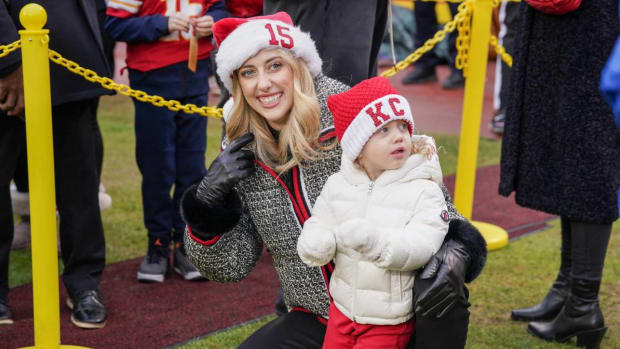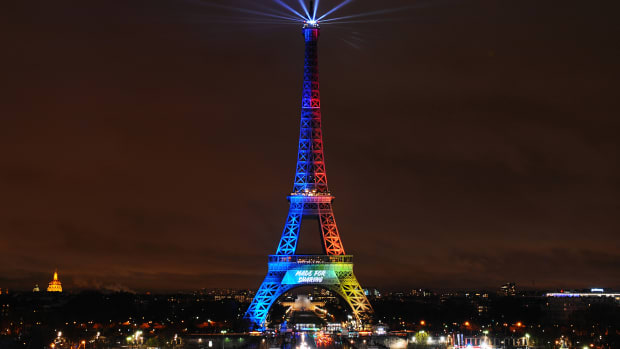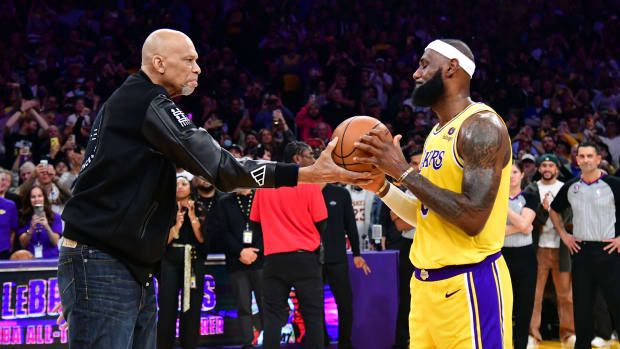My View From the Coronavirus Epicenter
KIRKLAND, Wash. – On Friday morning last week I went for a jog, heading down a hill near my house outside Seattle, toward Lake Washington, then banking right into a neighborhood near my two-year-old son’s favorite park. The one with the swings and the gentle slope he calls “the mountain.” Along the way, on NE 120th Street, I passed a maroon sign—a fleeting bit of scenery then; an ominous harbinger of pandemic now. In white letters it read: LIFE CARE CENTER OF KIRKLAND.
I thought nothing then of the nondescript nursing home, nestled among apartment complexes and pine trees, until later that day news broke all over the world: Patients and workers at the facility had been diagnosed with the respiratory (and super-contagious) disease known as COVID-19. News outlets were pegging Kirkland as the epicenter of coronavirus in the U.S., a test case for how cities across the country would respond. The disease, it seemed, had been quietly spreading for more than six weeks, just over a mile from my house. And my family would spend the subsequent week inside that epicenter. Same as our neighbors. Same as everyone else eventually will, if the virus continues to spread, as many experts expect.
Beyond our walls, my gym sat mostly empty, seemingly out of a heightened wariness about shared machines covered in sweat. At the local Fred Meyer, grocery shoppers wore surgical masks and wiped down carts filled to the brim with toilet paper and hand sanitizer and soup cans. At Costco, lines snaked everywhere and carts played bumper cars. My wife stocked up on essentials through Amazon and my mother sent her 40-year-old sportswriter son a text message, imploring him to wash his hands. A friend wondered aloud whether all of Seattle would soon be quarantined and an editor sent me panicked messages about reports likening the Emerald City to a “ghost town,” like something out of a zombie movie.
No exaggeration, 50 or so friends have reached out, but I have yet to feel the same level of alarm I’m hearing expressed from afar. My son’s daycare remains open, if not fully attended. Typical Seattle: I still see commuters jammed onto I-405 every morning. In most places, I still see people at restaurants and at the dry cleaners and the post office. I mailed my taxes yesterday, though I did jump when the woman behind the counter sneezed. We both reached for a nearby tub of hand sanitizer. So, yes, we’re all concerned. I shoot sideways glances at coughers. I read all the news reports, anxiety spiking with each breathless paragraph. I’m (mostly) following my wife’s instructions: Don’t eat or shop in Kirkland; stay largely inside our house.
***
More on the Coronavirus
* South Korean Pro Baseball Team Stuck in Florida as Virus Hits Home
* Chicago State Basketball Teams Cancel Games Due to Coronavirus
***
But because I am a sports writer, I do see the world through a sports lens, and what I’m seeing—with teams and with schools nearby—echoes my own experience. They’re apprehensive and cautious. They’re wondering aloud whether Seattle will be the first city where games are actually canceled. They’re weighing whether or not to play, whether they should alter training schedules or send players home. They’re turning, largely, to medical experts for guidance. Mostly, though, they’re urging parents, fans and players to remain vigilant—but not to overreact. As of my writing this, no team in Seattle had canceled anything of significance. The games will go on, as scheduled. For now.
Coronavirus has, though, become part of daily life. Mike Hopkins, coach of Washington’s basketball team, lives a short drive away from me. At his Tuesday news conference, the first question he fielded was about the school’s response to the outbreak.
The Huskies’ training staff has worked closely with campus leadership and with the UW Advisory Committee on Communicable Diseases, taking calls long before coronavirus arrived in Seattle, and they’ll follow the guidelines laid out by the Centers for Disease Control and Prevention. The school’s trainers have urged athletes to stay home if they’re sick or showing symptoms—so far, none have—and the athletic department is allowing employees to telecommute if they prefer. So far they haven’t canceled or postponed any events; the men’s Pac-12 tournament is still slated to begin March 11, in Las Vegas.
At his presser, Hopkins advised: “Travel cautiously.” Then he took a lighter tone. “Hand sanitizer, you can’t get it anywhere. Waters, anything.” That’s how I felt, too. It’s funny. And it’s not.
Such has been the dichotomy in the epicenter, a sense of doom and panic from the outside world, and something short of that in our own, real lives. It has made for a strange, tense mix. Sometimes (as when Gov. Jay Inslee declared a state of emergency) I feel bemused; other times (when it was reported that 50 Life Care residents had shown symptoms of respiratory illness) terrified; other times (when several infected people died at the same hospital where my son was born) despondent. It depends on the hour.
The sports world around me, too, is struggling to find the right response. Blazers guard C.J. McCollum announced on Monday he was “taking a break from autographs,” to avoid strangers’ germy hands. The NBA sent a memo to teams, imploring players and coaches to offer fist bumps rather than handshakes, limiting physical contact. NFL execs spread similar informal guidelines at the scouting combine, reasoning that they couldn’t be too careful.
Closer to home, officials at Juanita High (where my son takes swimming lessons on the weekends) and at UW and with the Mariners all responded to my inquiries by steering me toward web sites explaining the virus, with tips on how to avoid transmission, like washing your hands. The Mariners say they’re closely monitoring the situation, but they “fully expect to play baseball” by the time of their home opener, on March 26, after spring training in Arizona. The start of high school spring sports is still more than a week away, and Juanita High has yet to cancel any games or practices. UW officials have discussed that possibility, but for now they’re leaning on medical experts who suggest they move forward, even if students at the state’s largest university have gathered more than 13,000 signatures in favor of closing campus. Most teams responded to my forward-looking questions, if they responded at all, with non-answers and redirections toward corporate communications experts—the journalism equivalent of chirping crickets. A generous read would suggest they’re operating with an abundance of caution, choosing their words carefully, perhaps hoping not to whip up further panic. Maybe there’s enough of that already.
After all: Two people from Life Care died from the coronavirus. Then four. Then seven, as of Wednesday, and 10 across the state. The New York Times reported that a quarter of Kirkland’s firefighters are being quarantined after spending time at the nursing facility. F5, a secure application delivery company, shuttered its downtown offices after an employee came in contact with someone who tested positive. Six schools across Western Washington closed.
Celine Gounder, an infectious disease specialist and internist who in 2015 volunteered as an Ebola aid worker in Guinea (and who has a personal sports connection: She’s married to SI senior writer Grant Wahl) helps put some of this into perspective. She starts by clarifying that the word pandemic does not necessarily call for panic. A new virus—one that people have not been exposed to before, that they do not have immunity to—is spreading across communities and continents. In the case of this particular virus, the elderly seem to be particularly at risk.
But while she advocates for a degree of preparedness in case of any breaks in supply chains—have a first-aid kit at home; fill prescription meds, perhaps, for 90 days instead of 30—she tends to side with, say, the Juanita officials who planned to continue with practices and games as scheduled. Spring sports take place outdoors, she points out, and “that’s the best ventilation system you can possibly have.” Conversely, she understands some of the more extreme notions that have been floated, like playing the NCAA tournament in empty arenas, or canceling the Olympic Games in Tokyo this summer. “The Final Four is indoors,” she says. “That would have me more concerned. And Japan would be having people travel in from all over the world, mixing together, and then traveling back home. That could certainly contribute to the spread.”
That’s the thing. This will spread. There will be more cities like Kirkland. Already there are new confirmed cases, from Berkeley, Calif., to Westchester, N.Y. Officials at the World Health Organization describe the virus as more dangerous the flu. Maybe it’s only because the world is so upside down right now that this outbreak feels less crazy than it should. I’m not ready to pack up my family and flee to the hills. I’m also not going back to the grocery store anytime soon. Not yet. I’m puzzled by some of the reporting, alarmed by other bits of it. I’m consuming as much as humanly possible, day and night.
Meanwhile, in the epicenter, fear mixes with practicality. Schools in Kirkland remain open and commuters drive to work, right past Life Care, where TV crews huddle under white tents, trying to avoid early-morning rain showers. (Update: On Thursday, Northshore public schools, just to the north, announced closures, for as long as two weeks.) Life is normal, and it isn’t. There are fewer people at the parks, fewer rolls of toilet paper in the grocery store, fewer people eating out. But games and practices continue, notes of caution mixing with panic, fear and concern. It is possible to overreact, possible to ignore and possible to fall, like me, somewhere in between. The games go on, same as life, in ways that are different and confining and yet not as extreme as many might expect.
On Wednesday night I visited a friend’s new memorabilia shop in Bellevue, just south of Kirkland. And of all the businesses and restaurants around Collector’s Corner, not a customer was in sight. That’s the scary part: The landscape is constantly changing. It will evolve today and tomorrow and the day after that, in ways no amount of hand sanitizer can alter.






